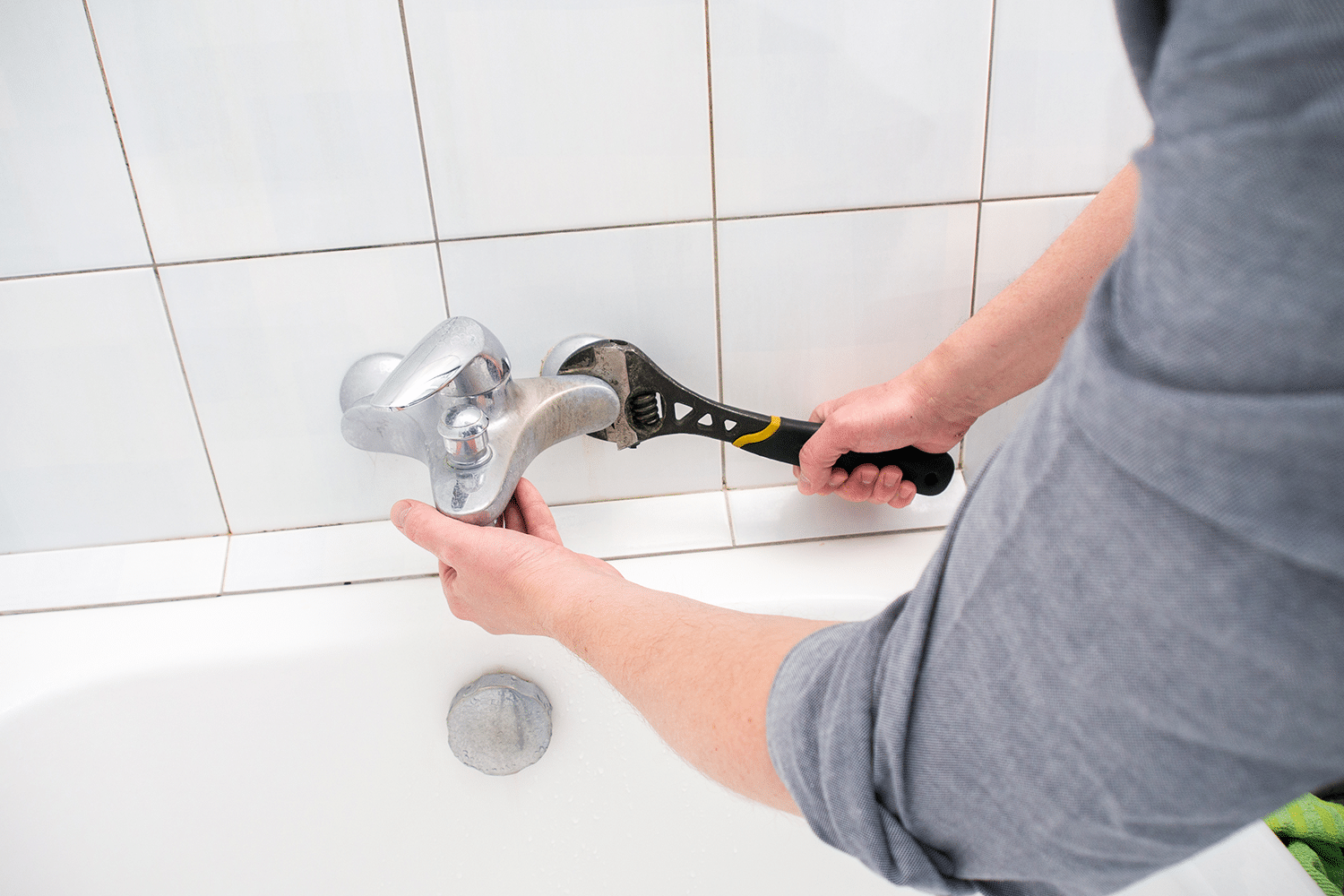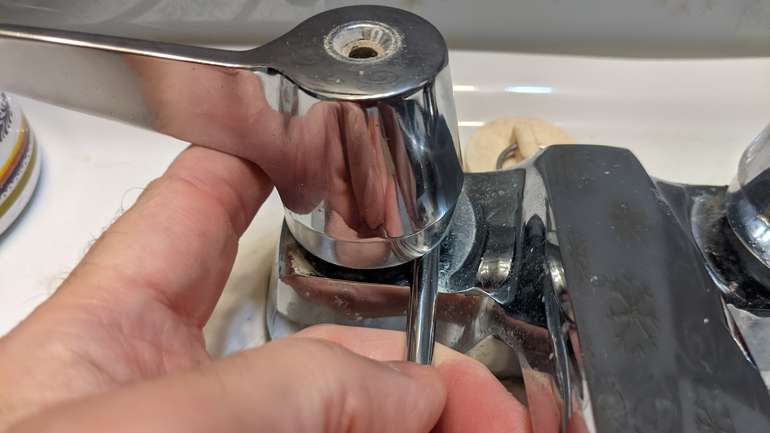On this page in the next paragraphs you can discover some exceptional expertise around Should I Repair or Replace a Leaky Faucet?.

Dripping faucets may appear like a minor hassle, but their effect goes beyond simply the annoyance of the sound. From wasting water to incurring unnecessary economic expenses and health and wellness risks, ignoring a leaking faucet can bring about different consequences. In this write-up, we'll explore why it's important to address this typical household concern quickly and properly.
Wastefulness of Water
Environmental Influence
Leaking taps contribute substantially to water wastage. According to the Environmental Protection Agency (EPA), a solitary tap dripping at one drip per secondly can throw away greater than 3,000 gallons of water each year. This not just strains water resources however additionally influences communities and wildlife based on them.
Financial Expenses
Raised Water Costs
Past the ecological influence, trickling taps can blow up water costs considerably. The gathered wastefulness with time converts right into greater utility expenditures, which could have been prevented with prompt repairs.
Prospective Residential Or Commercial Property Damages
Moreover, prolonged leaking can bring about damage to fixtures and surface areas bordering the tap. Water accumulation can cause staining, rust, and also architectural problems if left neglected, causing added repair work expenses.
Health and wellness Worries
Mold And Mildew and Mold Development
The continuous existence of wetness from a leaking faucet creates a perfect environment for mold and mold growth. These fungis not just jeopardize indoor air quality yet additionally present health and wellness risks, especially for individuals with respiratory conditions or allergies.
Waterborne Illness
Stagnant water in leaking taps can end up being a breeding place for microorganisms and various other microorganisms, raising the threat of waterborne illness. Pollutants such as Legionella bacteria thrive in stationary water, possibly causing major diseases when consumed or breathed in.
DIY vs. Professional Fixing
Benefits and drawbacks of DIY Repair
While some may try to repair a trickling faucet themselves, do it yourself repair work feature their own collection of challenges. Without correct knowledge and devices, do it yourself attempts can aggravate the issue or cause incomplete repair work, lengthening the trouble.
Benefits of Employing an Expert Plumber
Working with a professional plumber guarantees that the underlying root cause of the dripping faucet is dealt with successfully. Plumbing professionals possess the knowledge and devices to detect and fix faucet concerns successfully, conserving time and reducing the risk of more damages.
Step-by-Step Guide to Dealing With a Dripping Tap
Tools Called for
Before attempting to take care of a dripping tap, collect the required devices, including a flexible wrench, screwdrivers, replacement parts (such as washing machines or cartridges), and plumber's tape.
Typical Tap Issues and Their Solutions
Identify the kind of tap and the particular concern creating the drip. Typical troubles include worn-out washers, rusty valve seats, or faulty O-rings. Refer to manufacturer guidelines or on-line tutorials for detailed advice on fixings.
Safety nets
Regular Maintenance Tips
To avoid trickling taps, perform routine maintenance such as cleaning up aerators, evaluating for leakages, and changing damaged components promptly. Furthermore, take into consideration mounting water-saving tools or updating to a lot more effective fixtures.
Significance of Prompt Repair Works
Dealing with dripping faucets as quickly as they're seen stops additional water wastage and prospective damage, inevitably conserving both water and money in the long run.
Influence On Property Worth
Understanding of Well-Maintained Residential Or Commercial Property
Keeping a property in good condition, consisting of addressing upkeep issues like leaking faucets, boosts its perceived worth and desirability among possible buyers or occupants.
Influence on Resale Value
Features with well-kept plumbing components, consisting of faucets, command higher resale worths in the property market. Addressing leaking faucets can add to a favorable impact during home assessments and arrangements.
Ecological Duty
Specific Payment to Preservation
Taking obligation for repairing leaking faucets aligns with broader efforts toward water preservation and ecological sustainability. Every person's activities collectively make a significant impact on maintaining priceless sources.
Sustainable Living Practices
By prioritizing prompt repairs and embracing water-saving routines, people contribute to sustainable living practices that profit both existing and future generations.
Final thought
Dealing with a dripping faucet goes beyond plain benefit; it's an important action toward preserving water, decreasing economic expenses, and guarding health and wellness and residential or commercial property. Whether via DIY repair services or professional help, taking action to take care of trickling faucets is a little yet impactful means to advertise responsible stewardship of resources and add to a much healthier, extra sustainable future.
How to Fix a Dripping or Leaky Faucet
A leaking faucet is one of the most common problems that homeowners encounter, but it being commonplace doesn’t make it any less annoying. The constant drip drip drip of a leaking bathtub faucet, showerhead, or sink tap can disturb your home’s serenity. Left neglected, a dripping faucet can also result in higher water bills and discoloration or mold growth in your sink or plumbing fixtures.
Fortunately, you don’t have to be a trained plumber to know how to stop a dripping faucet. With some basic tools, replacement parts, and a little patience, leaky faucet repair is a breeze. In this article, we’ll explain what causes dripping faucets and how you can fix them.
What Causes a Leaking Faucet?
Kitchen and bathroom faucets come in all manner of designs, but most involve some combination of valves, O-rings, seals, and washers. The O-ring is usually the weakest link, but any one of these pieces can wear down over time. Heat, moisture, temperature fluctuations, minerals, mold, and movement can contribute to warping and corrosion, breaking the watertight seal. This just comes with the territory of being a homeowner. Everything is always subject to wear and tear, and some component parts of your appliances and fixtures need to be replaced on occasion. At least replacement O-rings are cheap!
More rarely, dripping faucets can be a symptom of excessively high water pressure. Were this the case in your home, you would probably notice that the leak is not isolated to one faucet. Water pressure issues are harder to resolve on your own. We recommend contacting a professional plumber if you suspect your water pressure is too high.
How to Fix a Dripping Faucet
Pipe wrench or monkey wrench Allen wrench set Screwdrivers Old towel or rag Shut off the water.
Before you do anything, you need to turn off the water to keep from drenching your kitchen or bathroom. You should find a valve under the sink and against the wall. Once you’ve turned this valve, try turning the faucet on to confirm that the water source has been cut off.
If you can’t locate your local valve for the faucet you’re working on, you can always shut off the water to the house at the main valve. Of course, this will prohibit anyone from using the sinks, showers, or toilets while you’re working on the faucet that’s giving you trouble.
Plug or block the drain.
You’ll be disassembling the faucet and removing some small bits of hardware. Plug the drain with a stopper or rag to avoid the possibility of a small screw falling into your P-trap.
Take apart the faucet assembly.
There are several varieties of kitchen and bathroom faucets, each with its own manner of assembly. For detailed instructions on how to disassemble your faucet, you can refer to the fixture’s manual or contact the manufacturer. If you know whether you have a ball, disc, cartridge, or compression faucet, you can find detailed schematics online.
In general, you need to begin by removing the faucet handles. You might notice a small screw that you’ll need to remove with a screwdriver or Allen wrench. If you don’t see any visible securing hardware, it’s likely hidden under a decorative cap that can be unscrewed or popped off with flathead screwdriver.
Remove each piece methodically, consulting a schematic when necessary. Take notes or arrange the pieces in such a way to make it easier to correctly reassemble the faucet later.
Remove the cartridge.
Once you’ve removed the handles and securing hardware, you should be able to remove the valve cartridge or stem. Some cartridges will slide right out. Other faucet models will require you to loosen a nut with a pipe wrench before you can remove the valve stem.
Examine the exposed hardware.
With the cartridge or stem removed, inspect the component parts. Check the rubber O-rings for wear and tear. Also examine the seat washer for corrosion or other damage. These pieces are usually the responsible parties for a dripping faucet, but it’s worth inspecting the other component parts while you have the faucet disassembled.
Find replacement parts.
Once you’ve identified which faucet component has failed, find an identical replacement. Your local hardware store should have O-rings, seat washers, and other standard components in stock. If you have a luxury or uncommon faucet, you may have to contact the manufacturer for a replacement part.
It’s a good idea to take your old parts with you to the hardware store so you can compare them with the store’s inventory and be sure you’re purchasing the correct replacement.
Reassemble the faucet.
With your new parts in hand, reconstruct the faucet and handles. Don’t be tempted to overtighten screws or nuts. You might think this could create a better seal, but it can instead damage or bend a delicate part of the assembly and create a new problem for you.
Turn on the water and test the faucet.
The only thing left to do is test your work. Unplug the sink, turn the water back on, and try the faucet. Congratulate yourself on a job well done!
https://www.libertyhomeguard.com/how-to-fix-a-dripping-or-leaky-faucet/

I'm certainly very eager about 4 Common Reasons for a Leaky Faucet and I hope you enjoyed reading our blog post. So long as you liked our blog entry kindly make sure you remember to pass it around. We appreciate your readership.